Home> Company News> How To Pick The Best Variable Stroke Pump
Hydraulic systems rely on pumps to generate the pressure necessary to move fluids through the system. A variable stroke pump is a type of hydraulic pump that allows for variable flow and pressure by changing the displacement of the pump. This is accomplished by adjusting the stroke length of the piston or plunger in the pump. Variable stroke pumps are important in hydraulic systems because they can help to conserve energy and reduce operating costs. Choosing the right variable stroke pump for a given application is critical for optimal system performance. In this guide, we will explore the different types of variable stroke pumps, their advantages over fixed displacement pumps, and important factors to consider when choosing a variable stroke pump. We will also discuss common applications, installation and maintenance procedures, and compare variable stroke pumps with other types of pumps.
Understanding Variable Stroke Pump
A variable stroke pump is a type of hydraulic pump that can adjust its stroke length to control the amount of fluid being pumped. The pump has a variable swash plate or a cam ring that can be adjusted to alter the angle of the pump pistons. This, in turn, changes the amount of fluid being pumped with each stroke. Variable stroke pumps are commonly used in hydraulic systems where the flow and pressure requirements vary widely.
There are two types of variable stroke pumps: axial piston pumps and bent axis piston pumps. Axial piston pumps have a circular housing with a series of pistons that move back and forth within the housing. The angle of the swash plate determines the stroke length and the amount of fluid being pumped. Bent axis piston pumps have a bent axis that allows the pistons to follow the contour of the swash plate, resulting in a smoother flow of fluid.
One of the main advantages of variable stroke pumps over fixed displacement pumps is that they can vary the amount of fluid being pumped based on the system's demand. This makes them more energy-efficient and reduces wear and tear on the hydraulic system components. Additionally, variable stroke pumps are less likely to overheat and can handle higher pressures than fixed displacement pumps.
Variable stroke pumps are also more versatile than fixed displacement pumps as they can be used in a wide range of applications. They can be used in mobile applications such as construction equipment, mining equipment, and agriculture machinery. They can also be used in industrial applications such as plastic injection molding machines, hydraulic presses, and material handling equipment. Additionally, variable stroke pumps are used in marine applications such as dredgers, barges, and offshore equipment.
In summary, variable stroke pumps are an important component of hydraulic systems, providing flexibility and energy efficiency. The two types of variable stroke pumps, axial piston pumps and bent axis piston pumps, each have their advantages and are suitable for different applications. Choosing the right variable stroke pump is crucial for optimal system performance.
Factors To Consider When Choosing Variable Stroke Pump
When selecting a variable stroke pump for a hydraulic system, there are several important factors to consider. These factors include the required flow rate, operating pressure, temperature range, viscosity of the fluid, power source, and cost.
The required flow rate is one of the most critical factors to consider when choosing a variable stroke pump. It's essential to choose a pump that can provide the necessary flow rate for the hydraulic system to function optimally. The flow rate required will depend on the specific application and the system's design.
The operating pressure is another crucial factor to consider when selecting a variable stroke pump. The pump must be able to handle the pressure required by the hydraulic system to operate effectively. The operating pressure will also depend on the application and system design.
The temperature range of the hydraulic system is also an essential consideration. The pump must be able to operate within the temperature range required by the system. If the pump cannot operate within the required temperature range, it may suffer from reduced performance or even fail.
The viscosity of the fluid being pumped is another important factor to consider. The pump must be able to handle the fluid's viscosity, which can vary depending on the application and the fluid being pumped.
The power source is also a critical factor to consider. The pump must be able to operate using the power source available in the system, whether it's electric or hydraulic power.
Finally, cost is an essential consideration when choosing a variable stroke pump. The cost will depend on several factors, including the pump's specifications, the manufacturer, and the supplier. It's important to choose a pump that provides the required performance while also fitting within the budget for the hydraulic system.

Different Applications Of Variable Stroke Pump
Variable stroke pumps are used in a wide range of applications, including mobile, industrial, and marine equipment. They are commonly used in applications where the flow rate and pressure requirements vary, such as in hydraulic systems that power machinery.
Mobile Applications Variable stroke pumps are used in various mobile applications, such as construction equipment, agriculture machinery, and mining equipment. These machines require hydraulic systems that are durable, efficient, and easy to maintain. Variable stroke pumps can adjust their flow rate and pressure to meet the changing demands of these applications, making them ideal for use in mobile equipment.
Industrial Applications Variable stroke pumps are also used in industrial applications, such as plastic injection molding machines, hydraulic presses, and material handling equipment. These machines require precise control of hydraulic systems to ensure efficient and reliable operation. Variable stroke pumps provide the necessary flow rate and pressure control, making them well-suited for use in industrial applications.
Marine Applications Variable stroke pumps are also used in marine applications, such as dredgers, barges, and offshore equipment. These applications require hydraulic systems that can operate in harsh environments, including high salt levels and extreme temperatures. Variable stroke pumps can adjust their flow rate and pressure to accommodate these harsh conditions, making them ideal for use in marine equipment.
Overall, variable stroke pumps are an important component in hydraulic systems used in a wide range of applications. Their ability to adjust to changing flow rate and pressure requirements makes them well-suited for use in mobile, industrial, and marine equipment.
Installation And Maintenance Of Variable Stroke Pump
Variable stroke pumps are important components of hydraulic systems and play a critical role in providing the necessary power to operate various types of machinery. Proper installation and maintenance of variable stroke pumps can help ensure the optimal performance of the hydraulic system.
When it comes to the installation process, there are a few key factors to consider. The first step is to ensure that the pump is installed in the correct location and orientation within the system. This can help prevent issues such as fluid cavitation, which can occur when the pump is not properly positioned.
It is also important to ensure that all connections between the pump and the hydraulic system are secure and leak-free. Any leaks in the system can cause a loss of pressure and reduce the overall efficiency of the system.
Regular maintenance is also important to keep the variable stroke pump functioning at its best. This includes routine inspections of the pump and the hydraulic system to detect any signs of wear or damage. Any worn or damaged parts should be replaced promptly to prevent further damage to the pump or other components of the hydraulic system.
Other maintenance tasks may include cleaning or replacing filters and checking the fluid level and quality. It is also important to follow the manufacturer's recommended maintenance schedule and procedures to ensure that the pump is properly maintained.
In addition to regular maintenance, it is important to have a solid understanding of common troubleshooting techniques for variable stroke pumps. This may include diagnosing and addressing issues such as fluid leaks, decreased performance, and abnormal noises.
Overall, proper installation and maintenance of variable stroke pumps can help ensure that hydraulic systems operate at their best and provide reliable and efficient performance for a variety of applications.
Comparison Of Variable Stroke Pump With Other Types Of Pumps
Variable stroke pumps are just one type of hydraulic pump available on the market. Understanding the differences between variable stroke pumps and other types of pumps can help in choosing the best pump for a particular application.
1. Comparison with Fixed Displacement Pump
Fixed displacement pumps, also known as positive displacement pumps, operate at a fixed flow rate regardless of the system's demand. The pump moves a fixed amount of fluid with each rotation, so the flow rate is directly proportional to the pump's speed. They are generally less expensive than variable stroke pumps and are suitable for applications where a constant flow rate is required.
Variable stroke pumps, on the other hand, can adjust the flow rate according to the system's demand. They can deliver different flow rates by varying the stroke of the piston. They are more expensive than fixed displacement pumps but are more efficient since they only pump the amount of fluid required by the system.
2. Comparison with Variable Displacement Pump
Variable displacement pumps, also known as adjustable displacement pumps, can vary the flow rate by adjusting the size of the pump's working chamber. This type of pump is suitable for applications where a wide range of flow rates is required, and the system pressure varies widely.
Variable stroke pumps are different from variable displacement pumps since they change the flow rate by adjusting the piston stroke rather than the working chamber size. They are suitable for applications where the system pressure remains relatively constant, and only the flow rate needs to be adjusted.
3. Conclusion
When choosing a hydraulic pump, it's essential to consider the specific requirements of the application. Fixed displacement pumps are suitable for applications where a constant flow rate is required, while variable displacement pumps are more suitable for applications where a wide range of flow rates is needed. Variable stroke pumps are the best option when the system pressure is relatively constant, and only the flow rate needs to be adjusted. Understanding the differences between these pumps can help in choosing the best pump for a particular application.

Variable stroke pumps play a crucial role in the operation of hydraulic systems. Understanding their function, advantages, and proper use is essential for anyone involved in hydraulic system design, installation, or maintenance. In this guide, we have explored the various aspects of variable stroke pumps, including their working principle, types, and applications. We have also highlighted the factors that should be considered when selecting a variable stroke pump, and the importance of proper installation, maintenance, and troubleshooting.
Variable stroke pumps are hydraulic pumps that can adjust their displacement or stroke volume according to the system's demand for fluid. This adjustment is typically achieved through a mechanical or electronic control system that changes the pump's output based on the system's requirements. Unlike fixed displacement pumps, which have a constant output, variable stroke pumps can deliver variable output to match the fluid flow requirements of the system.
There are several types of variable stroke pumps, including axial piston pumps, radial piston pumps, and vane pumps. Each type has its advantages and disadvantages and is suitable for specific applications. For example, axial piston pumps are often used in mobile applications, while radial piston pumps are ideal for high-pressure industrial applications.
One of the primary advantages of variable stroke pumps is their energy efficiency. Since they can adjust their output to match the system's requirements, they can operate at a lower energy level when the system demands less fluid. This energy-saving feature translates into lower operating costs and reduced environmental impact. Additionally, variable stroke pumps offer greater flexibility and versatility than fixed displacement pumps, making them ideal for applications with varying fluid flow requirements.
When selecting a variable stroke pump, several factors must be considered, including the flow rate requirements, operating pressure, temperature range, viscosity of the fluid, power source, and cost. These factors will help determine the appropriate pump size and type for the specific application.
Variable stroke pumps find a wide range of applications in various industries, including mobile applications such as construction equipment, agriculture machinery, and mining equipment, industrial applications such as plastic injection molding machines, hydraulic presses, and material handling equipment, and marine applications such as dredgers, barges, and offshore equipment.
Proper installation and maintenance are crucial for ensuring optimal performance and longevity of variable stroke pumps. The installation process should follow the manufacturer's instructions and use the appropriate tools and equipment. Maintenance procedures should include regular inspection, cleaning, and replacement of worn or damaged parts. Common troubleshooting techniques, such as checking for leaks or irregular pump noise, should also be employed to detect and fix any issues early on.
In comparison to other types of pumps, such as fixed displacement pumps and variable displacement pumps, variable stroke pumps offer several advantages, including greater energy efficiency, versatility, and flexibility. These advantages make them ideal for applications with varying fluid flow requirements.
In conclusion, variable stroke pumps play a critical role in hydraulic systems and can offer significant advantages over fixed displacement pumps. Proper selection, installation, and maintenance of variable stroke pumps are essential for optimal system performance and longevity. By considering the factors discussed in this guide, hydraulic system designers, installers, and maintenance personnel can choose the right variable stroke pump for their specific application and ensure reliable and efficient operation.


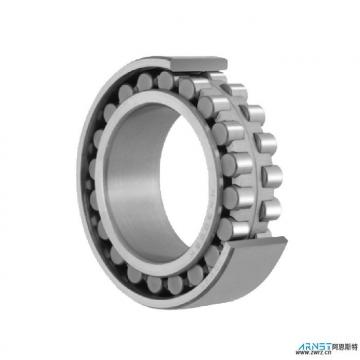 CRBH12025AUU Crossed Roller Bearing
CRBH12025AUU Crossed Roller Bearing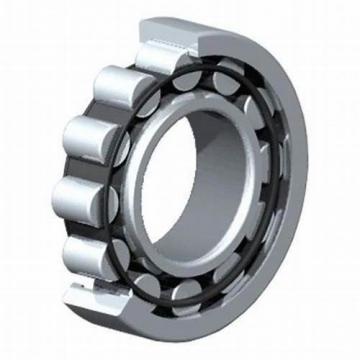 CRBH14025AUU Crossed Roller Bearing
CRBH14025AUU Crossed Roller Bearing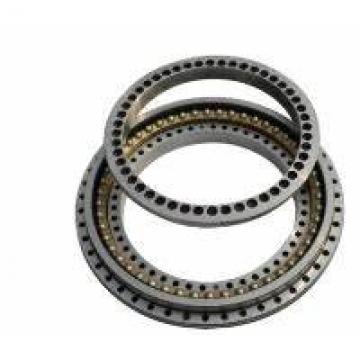 CRBH8016A Crossed roller bearing
CRBH8016A Crossed roller bearing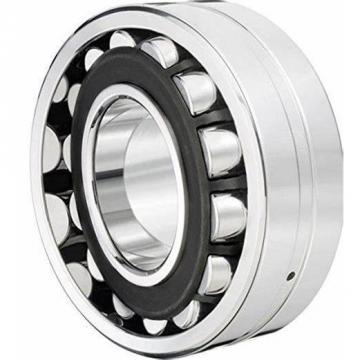 CRBH9016A Crossed roller bearing
CRBH9016A Crossed roller bearing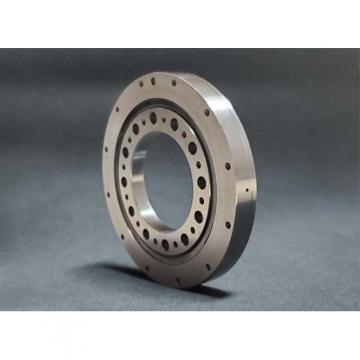 CRBH13025AUU Crossed Roller Bearing
CRBH13025AUU Crossed Roller Bearing